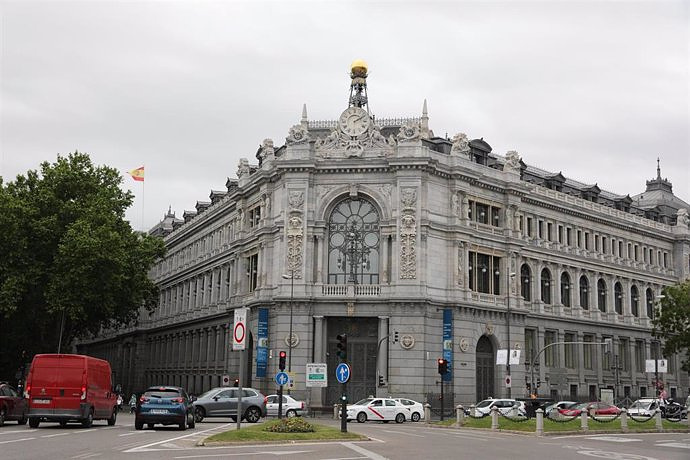Still in its infancy a few years ago, the e-border trade is now the locomotive for sale online. But what are the drivers of this trading globalised modern times? Why consumers choose to buy an e-seller overseas ? A few figures to capture the phenomenon.
In a study published at the end of 2016, the expressiste DHL dare to big words : the e-commerce cross-border would be "the spice trade in the Twenty-first century". Exaggerated? Not that much, if you consider the figures, dizzying. Become the locomotive of the online sales, the e-commerce cross-border accounted for in 2015, a market of $ 300 billion. And its growth is expected to be 25% per year until 2020. Has this deadline, it will be $ 900 billion, and almost a quarter of the e-commerce world.
ALSO READ >> China , complex eldorado of e-commerce
But what are the engines of this new global market and digital? What is it that pushes consumers to do their shopping on foreign sites? First, it should be noted that the e-commerce cross-border concerns in the first place two categories of goods: fashion products (clothes, shoes, accessories), and electronics (computers, smartphones and their accessories, audio equipment, etc.).
Your support is essential. Subscribe for $ 1 support UsBehind, other families of products, is placed in ambush. Some categories show a higher growth rate than e-commerce cross-border as a whole, such as cosmetics, products for pets, food, sports equipment, note the authors of the study for DHL. And certain clients national use many cross-border for specific types of property, such as the Chinese for cosmetics. In all cases, make come the end of the world a product of common consumption is no longer anything exceptional.
Source : The spice trade of the 21st century. Guide on the opportunities of e-commerce cross-border, DHL, 2016. Data : The consumer barometer of 2016, Google/TNS
The Express
What are the arguments to buy a property abroad, rather than in his own country ? Three types of reasons dominate: the offer most advantageous (in terms of price in particular), the better the availability (in some countries, certain goods can only be purchased at the international), and the confidence in the product and the seller.
The price is the number one reason. But attention: for e-retailers, to stake everything on the price of property to impose on a foreign market is not necessarily a good long-term strategy. Because they are more likely to find, sooner or later, a competitor that will beat it on the ground. To gain a real competitive advantage, it is better to distinguish themselves by the choice and availability of products, trust and customer service, the attractiveness and practicality of the web site, etc
the Average of 13 countries : Australia, Austria, Brazil, China, Germany, India, Japan, Nigeria, Russia, Singapore, UAE, Uk, USA. Source: "The spice trade in the 21st century. Guide on the opportunities of e-commerce cross-border", DHL, 2016. Data : "The consumer barometer 2016", Google/TNS
The Express
there are also factors of a nature to discourage the purchase cross-border: in particular those related to logistics, trust in e-merchant, price, and customer experience. According to the "Consumer barometer" of Google, quoted in the study, DHL, 24% of customers have concerns about the return of the products, and 18% related to the time of delivery. And according to another study by Paypal, the three major barriers on the consumer side are the costs of delivery, the fear that the product is not delivered, and finally the subject's customs and taxes.
Finally, what are the regions of the world-leading e-commerce cross-border ? For the sellers the French, the main customers are european. At the global level, according to a study by the firm Accenture, the market for cross-border spreads in 2014 the three main poles that are roughly equivalent : western Europe, North America and the Asia-Pacific area. But in 2020, the latter will have taken the first place, and far : they will focus half of all global transactions ! Undoubtedly, the future of e-commerce cross-border, is to be written to the Is...
Read our complete file
E-commerce cross-border, adapt to the difference
The future giants of the e-commerce world How to make his hole on a marketplace ? The future of e-commerce has written to the internationalSource: "Cross-border e-commerce", Accenture, 2016. Data: EIU, Industry Research Report, World Bank, Accenture Analysis.
The Express

 Exploring Cardano: Inner Workings and Advantages of this Cryptocurrency
Exploring Cardano: Inner Workings and Advantages of this Cryptocurrency Seville.- Economy.- Innova.- STSA inaugurates its new painting and sealing hangar in San Pablo, for 18 million
Seville.- Economy.- Innova.- STSA inaugurates its new painting and sealing hangar in San Pablo, for 18 million Innova.- More than 300 volunteers join the Andalucía Compromiso Digital network in one month to facilitate access to ICT
Innova.- More than 300 volunteers join the Andalucía Compromiso Digital network in one month to facilitate access to ICT Innova.-AMP.- Ayesa acquires 51% of Sadiel, which will create new technological engineering products and expand markets
Innova.-AMP.- Ayesa acquires 51% of Sadiel, which will create new technological engineering products and expand markets Prosecutor's Office files the investigation for alleged espionage of Rodríguez Sol in Operation Catalonia
Prosecutor's Office files the investigation for alleged espionage of Rodríguez Sol in Operation Catalonia The judge blocks the account of Piqué's company that still receives payments from Saudi Arabia for the Super Cup
The judge blocks the account of Piqué's company that still receives payments from Saudi Arabia for the Super Cup The Government will update the sex offender registry in real time after detecting subsequent crimes
The Government will update the sex offender registry in real time after detecting subsequent crimes The TC inadmisses Ciudadanos' appeal against Puigdemont's candidacy for the Catalan elections
The TC inadmisses Ciudadanos' appeal against Puigdemont's candidacy for the Catalan elections How Blockchain in being used to shape the future
How Blockchain in being used to shape the future Not just BTC and ETH: Here Are Some More Interesting Coins Worth Focusing on
Not just BTC and ETH: Here Are Some More Interesting Coins Worth Focusing on Looking for video games that value the neighborhoods of Valencia
Looking for video games that value the neighborhoods of Valencia UPV researchers improve the efficiency of air conditioning systems using a geothermal heat pump
UPV researchers improve the efficiency of air conditioning systems using a geothermal heat pump València is committed to citiverse and smart tourism to be "the reference technological hub of the Mediterranean"
València is committed to citiverse and smart tourism to be "the reference technological hub of the Mediterranean" Valencia displays its "innovative and technological potential" at the Emerge Americas event in Miami
Valencia displays its "innovative and technological potential" at the Emerge Americas event in Miami A million people demonstrate in France against Macron's pension reform
A million people demonstrate in France against Macron's pension reform Russia launches several missiles against "critical infrastructure" in the city of Zaporizhia
Russia launches several missiles against "critical infrastructure" in the city of Zaporizhia A "procession" remembers the dead of the Calabria shipwreck as bodies continue to wash up on the shore
A "procession" remembers the dead of the Calabria shipwreck as bodies continue to wash up on the shore Prison sentences handed down for three prominent Hong Kong pro-democracy activists
Prison sentences handed down for three prominent Hong Kong pro-democracy activists ETH continues to leave trading platforms, Ethereum balance on exchanges lowest in 3 years
ETH continues to leave trading platforms, Ethereum balance on exchanges lowest in 3 years Investors invest $450 million in Consensys, Ethereum incubator now valued at $7 billion
Investors invest $450 million in Consensys, Ethereum incubator now valued at $7 billion Alchemy Integrates Ethereum L2 Product Starknet to Enhance Web3 Scalability at a Price 100x Lower Than L1 Fees
Alchemy Integrates Ethereum L2 Product Starknet to Enhance Web3 Scalability at a Price 100x Lower Than L1 Fees Mining Report: Bitcoin's Electricity Consumption Declines by 25% in Q1 2022
Mining Report: Bitcoin's Electricity Consumption Declines by 25% in Q1 2022 Oil-to-Bitcoin Mining Firm Crusoe Energy Systems Raised $505 Million
Oil-to-Bitcoin Mining Firm Crusoe Energy Systems Raised $505 Million Microbt reveals the latest Bitcoin mining rigs -- Machines produce up to 126 TH/s with custom 5nm chip design
Microbt reveals the latest Bitcoin mining rigs -- Machines produce up to 126 TH/s with custom 5nm chip design Bitcoin's Mining Difficulty Hits a Lifetime High, With More Than 90% of BTC Supply Issued
Bitcoin's Mining Difficulty Hits a Lifetime High, With More Than 90% of BTC Supply Issued The Biggest Movers are Near, EOS, and RUNE during Friday's Selloff
The Biggest Movers are Near, EOS, and RUNE during Friday's Selloff Global Markets Spooked by a Hawkish Fed and Covid, Stocks and Crypto Gain After Musk Buys Twitter
Global Markets Spooked by a Hawkish Fed and Covid, Stocks and Crypto Gain After Musk Buys Twitter Bitso to offset carbon emissions from the Trading Platform's ERC20, ETH, and BTC Transactions
Bitso to offset carbon emissions from the Trading Platform's ERC20, ETH, and BTC Transactions Draftkings Announces 2022 College Hoops NFT Selection for March Madness
Draftkings Announces 2022 College Hoops NFT Selection for March Madness



























